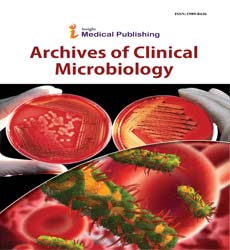Abstract
High Prevalence of Sexually Transmitted Infections (STIs) in Asymptomatic Greek Women
Title: Sexually Transmitted Infections (STIs) varies between countries, depending on various factors (behavior, age, preventive measures etc.)
Background: Aim of this study was to determine the prevalence of various STIs in asymptomatic sexually active women in Central Greece.
Methods and Findings: From June 2014 to May 2016, a total of 188 women, negative for cervical lesion or inflammation according to cytological test, nonvaccinated for HPV and aged between 19-59 years old (mean age 34 years old), were examined. The study material included: 1. blood sample 2. sample of vaginal secretions 3. cervical swab and 4. endo-cervical brush. One hundred – ten women out 188, were found to have at least one STIs (58.5 %), while, 46 of them were positive for more than one. Among the STIs detected, Ureaplasma parvum predominated (34%) followed by Candida albicans (24.5%), high-risk HPV subtypes (23.4%), Chlamydia trachomatis (3.2%) and Mycoplasma hominis (2.1%). None woman was found to be positive for Trichomonas vaginalis, Gardnerella vaginalis, Mycoplasma genitalium, Ureaplasma urealyticum, Treponema pallidum and Human Immunodeficiency Virus (HIV). The most common HPV sub-type were the 52 and 39, followed by 59, 16, 31, 33, 56, 18, 51, 58 and 35. The majority of HPV-positive women were colonised by one sub-type, while 10% of HPV-positive women were colonised with more than one.
Conclusion: No significant differences in the prevalence rate were observed between age groups. A weak positive correlation was observed between the concomitant presence of U. parvum/M.hominis, U. parvum/C. trachomatis, and HPV/ number of partners. Continued close monitoring of the prevalence of STIs in healthy individuals is important for preventing their dissemination.
Author(s):
Florou Z, Kleoniki P, Serafim F, Anargyros S, Petinaki E, Christina M and Vassilios L
Abstract | Full-Text | PDF
Share this

Abstracted/Indexed in
- Google Scholar
- Open J Gate
- Genamics JournalSeek
- The Global Impact Factor (GIF)
- Open Archive Initiative
- China National Knowledge Infrastructure (CNKI)
- Scimago
- Directory of Research Journal Indexing (DRJI)
- WorldCat
- Proquest Summons
- Publons
- MIAR
- ResearchGate
- University Grants Commission
- Geneva Foundation for Medical Education and Research
- Secret Search Engine Labs
Open Access Journals
- Aquaculture & Veterinary Science
- Chemistry & Chemical Sciences
- Clinical Sciences
- Engineering
- General Science
- Genetics & Molecular Biology
- Health Care & Nursing
- Immunology & Microbiology
- Materials Science
- Mathematics & Physics
- Medical Sciences
- Neurology & Psychiatry
- Oncology & Cancer Science
- Pharmaceutical Sciences

